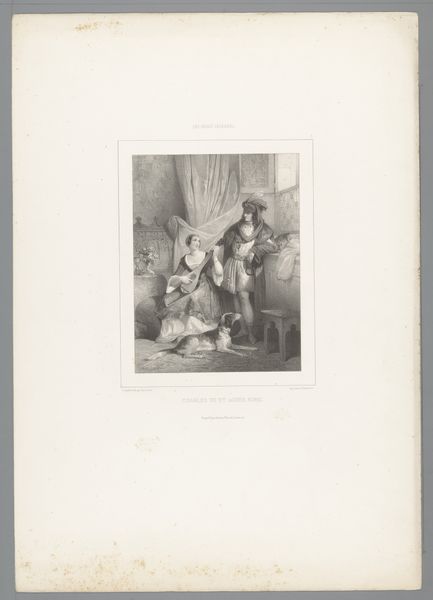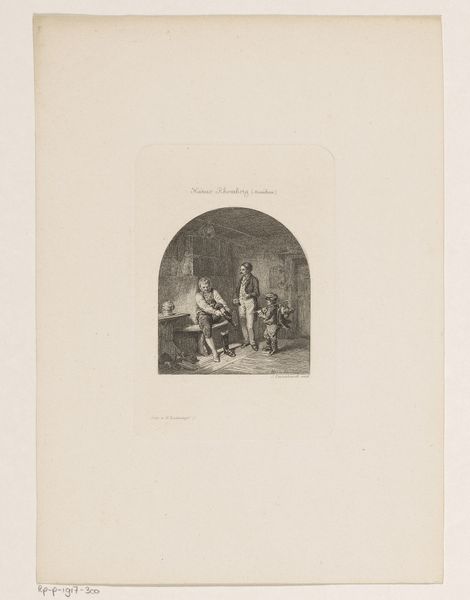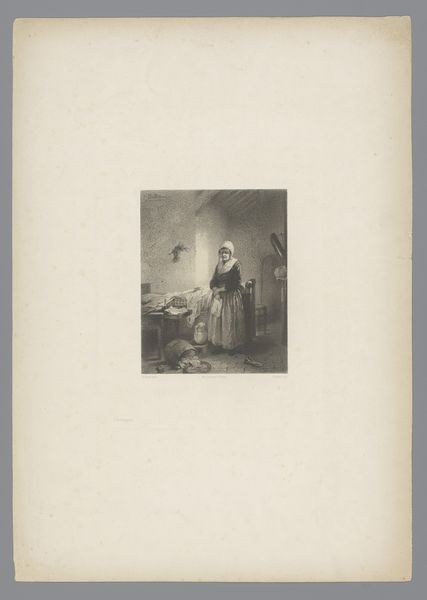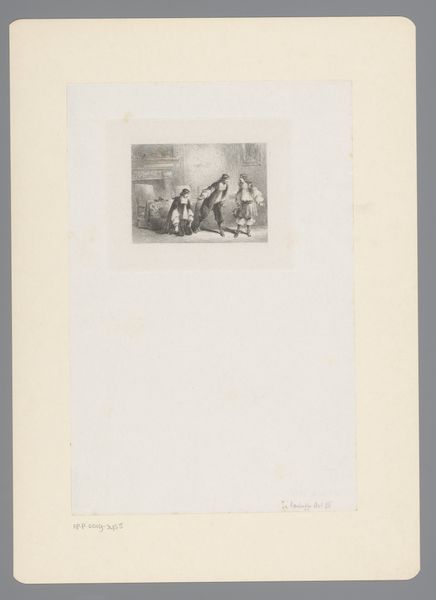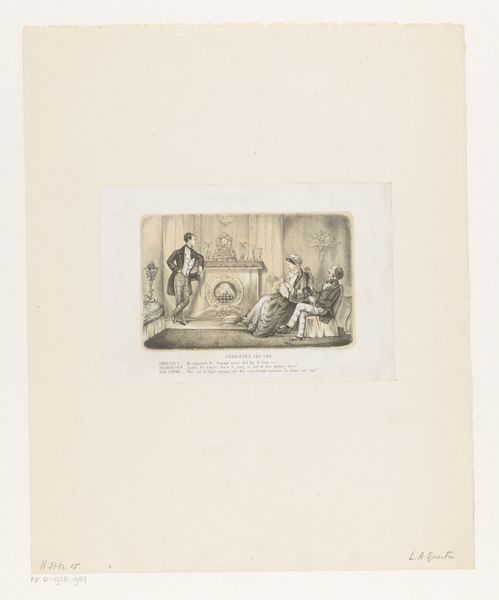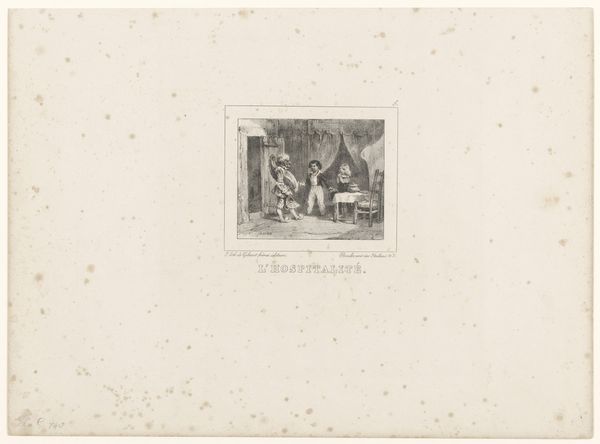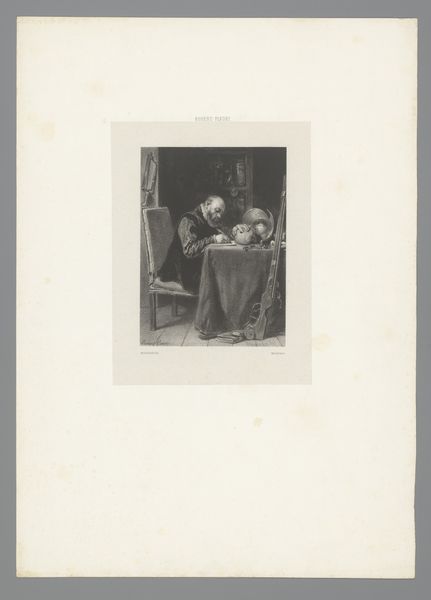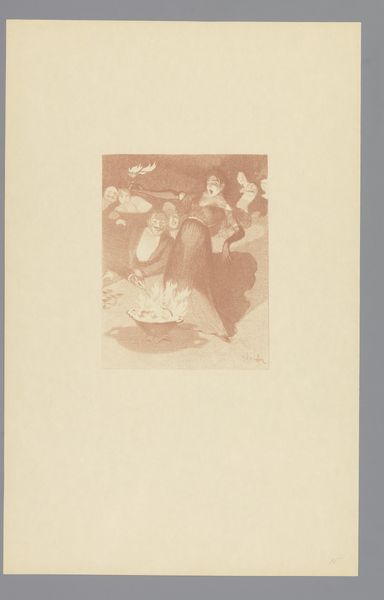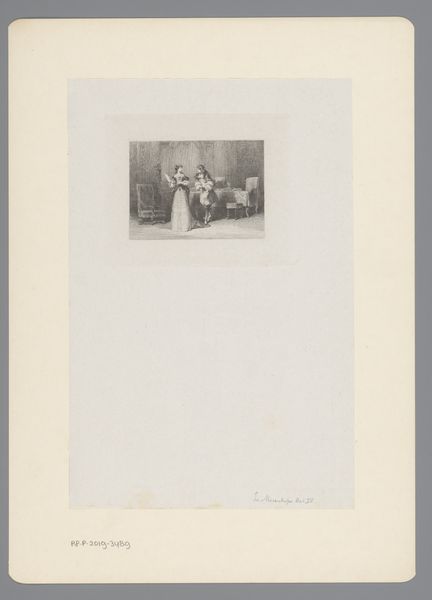
drawing, intaglio, engraving
#
portrait
#
drawing
#
intaglio
#
romanticism
#
genre-painting
#
history-painting
#
engraving
Dimensions: height 449 mm, width 307 mm
Copyright: Rijks Museum: Open Domain
Curator: This engraving by Adolphe Mouilleron from 1841 is titled "Benvenuto Cellini in zijn werkplaats" and can be found here at the Rijksmuseum. It's quite a detailed portrayal of the artist in his studio. My immediate impression is of introspection and perhaps a bit of weariness, don’t you think? Editor: Indeed. The tonal range in the engraving evokes a contemplative mood, a shadowy space thick with the atmosphere of creative labour. What tools were common in Cellini's time, and what can this teach us about the production of artistic craft in the 19th century, relative to earlier methods and norms? Curator: Good point. The composition is almost theatrical. We see Cellini surrounded by the tools and artifacts of his trade, items such as molds, a partially finished sculpture, and metalworking implements. His presence dominates, however the symbols scattered around also reveal something more about Cellini. What might these symbols tell us about his life? Editor: Absolutely! The snake handle on the ewer sitting atop Cellini's workbench stands out. The serpent, known for rebirth and alchemy, speaks to Cellini's transformation of base metals into artistic and financially valued commodities. Note also the discarded armour near Cellini, it acts to recontextualize him away from martial matters, toward artistic craft. Curator: Fascinating interpretation. It reminds me how 19th-century Romanticism often looked back to the Renaissance, idealizing figures like Cellini as the embodiment of artistic genius, somewhat mythologizing him. Editor: I would not argue. But what of Mouilleron, what techniques of engraving might he be referencing, re-contextualizing, and perhaps developing here in his own 19th century workshop? Curator: I appreciate how it invites consideration of both Cellini's era and Mouilleron's artistic decisions in portraying it. Editor: An enduring example of the cultural capital vested in craftsmanship and the iconography of creativity across time.
Comments
No comments
Be the first to comment and join the conversation on the ultimate creative platform.
